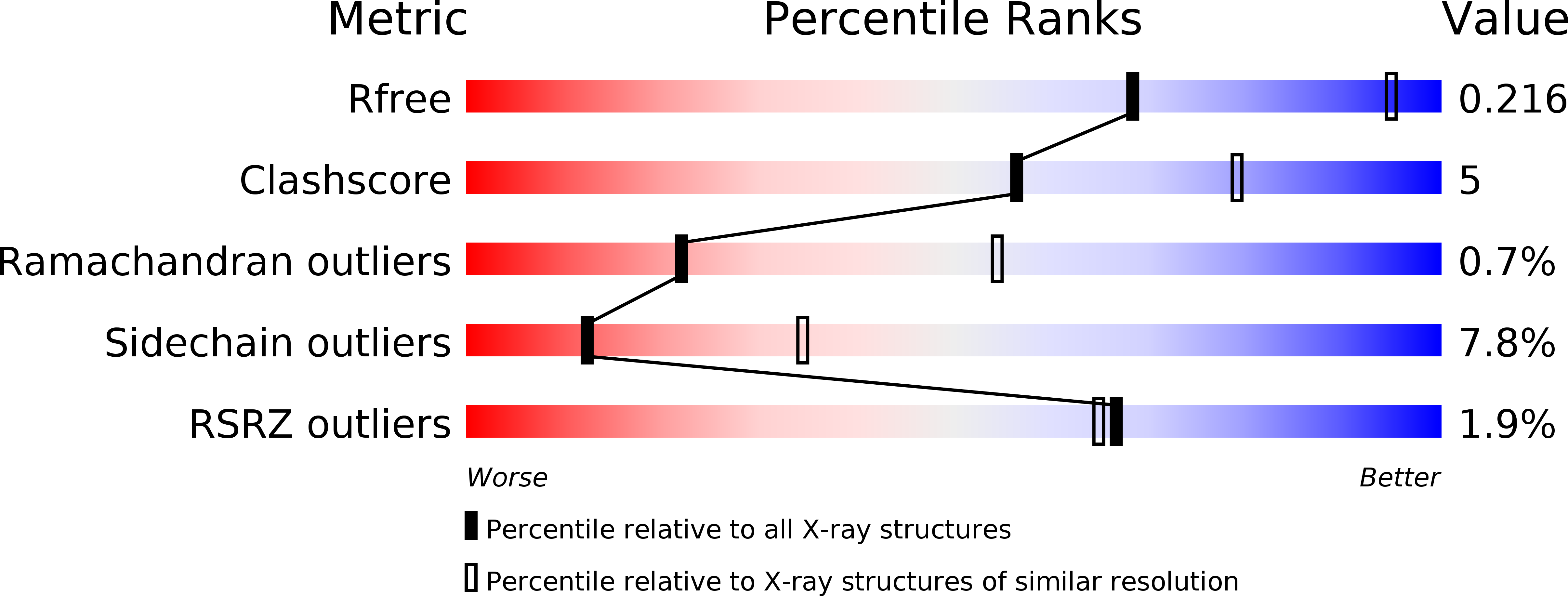
Deposition Date
2014-11-17
Release Date
2015-01-14
Last Version Date
2024-02-28
Entry Detail
PDB ID:
4WYO
Keywords:
Title:
Crystal structure of human-yeast chimera acetyl coA carboxylase CT domain bound to Compound 1
Biological Source:
Source Organism:
Saccharomyces cerevisiae (Taxon ID: 559292)
Host Organism:
Method Details:
Experimental Method:
Resolution:
2.89 Å
R-Value Free:
0.20
R-Value Work:
0.15
R-Value Observed:
0.15
Space Group:
P 21 21 21


